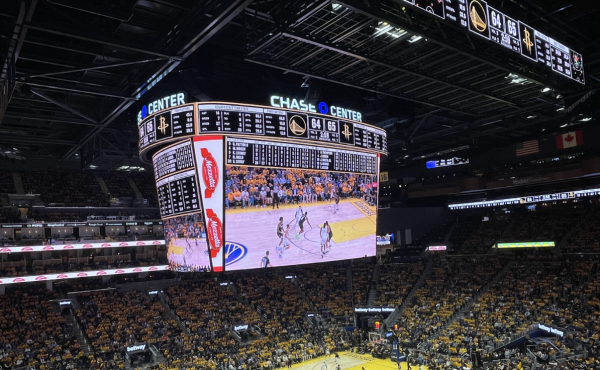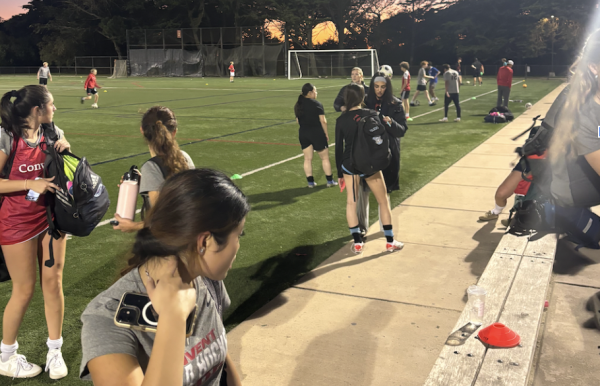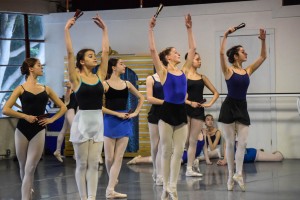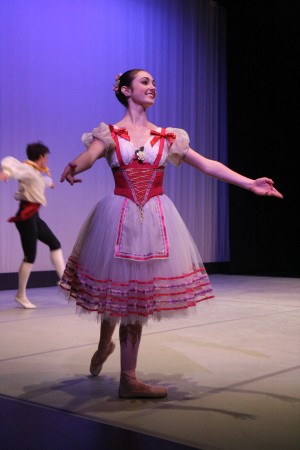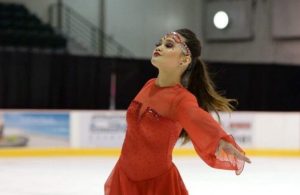Cheerleader shatters stereotypes
Junior finds athletic passion outside of school.
Ever since seeing a television special about an award-winning cheer team when she was younger, junior Emma Kob has dedicated herself to cheerleading for Pacific Coast Magic’s competitive cheer team.
“I’ve been cheerleading since the sixth grade,” Kob said. “I wanted to do gymnastics — mostly for the tumbling — but I really like getting new skills and working towards goals. I initially got started in tumbling, which is my favorite part.”
Kob practices at least three times a week, frequently ending practice at 10:30 p.m.. The team begins practices with a warmup, then focuses on various stunts including baskets, pyramids and jump sections to prepare for competitions, according to Kob’s coach Tyler Hendrickson.
“The team competes approximately 10 times throughout the season,” Hendrickson said. “They put everything together in an artistic routine that not only requires them to develop the skill set, but the muscular strength and endurance to do a full routine.”
Teams are qualified in two categories: age group and skill level. During competitions, judges use a scoring rubric based on the team’s skill level to determine their score, according to Hendrickson.
“You have to be very diligent about what you do because it’s hardcore cardio for two minutes and 30 seconds,” Kob said. “You know you can physically do it because you’ve worked for an entire year, but you have to clear your mind and say ‘I can do this and I have my entire team working with me.’”
For Kob, the biggest initial challenge was learning how to balance school work and cheer, as well as dealing with the distance of the gym where she practices.
“I have to leave an hour early because it’s in South San Francisco near the airport,” Kob said. “It has turned out to be a good thing because I got to know a lot of people at the gym, so now I have my school friends and my cheer friends from different parts of the city.”
The physicality and commitment of cheerleading is often overlooked because of the misconception of cheerleaders as being whiny girls who don’t work hard, according to Hendrickson.
“People tend to think cheerleading is like the movie ‘Bring It On’ and that cheerleaders just want to be popular,” Kob said. “Competitive cheerleading is more about passion than status. It’s a lot of hard work, mentally and physically.”
The performance aspect of cheerleading can be difficult for new cheerleaders to adjust to, according to Hendrickson.
“When we go to some of these competitions, we’re in major event arenas with hundreds — even thousands — of people,” Hendrickson said. “When you step out on that floor, it’s a test of will, nerves and composure to not just learn things, but to perform them in a way that they look easy and elegant and graceful under pressure.”
Many athletes begin cheerleading individually with direction from outside coaches before joining cheer teams, which challenges them to step outside of their comfort zones, according to Hendrickson.
“When I joined the team, since I’m on the shyer side, I learned how to speak up and have a bit more confidence and work well with others,” Kob said. “Because of how much I’ve learned from cheerleading, I hope to continue cheer for as long as I can.”



